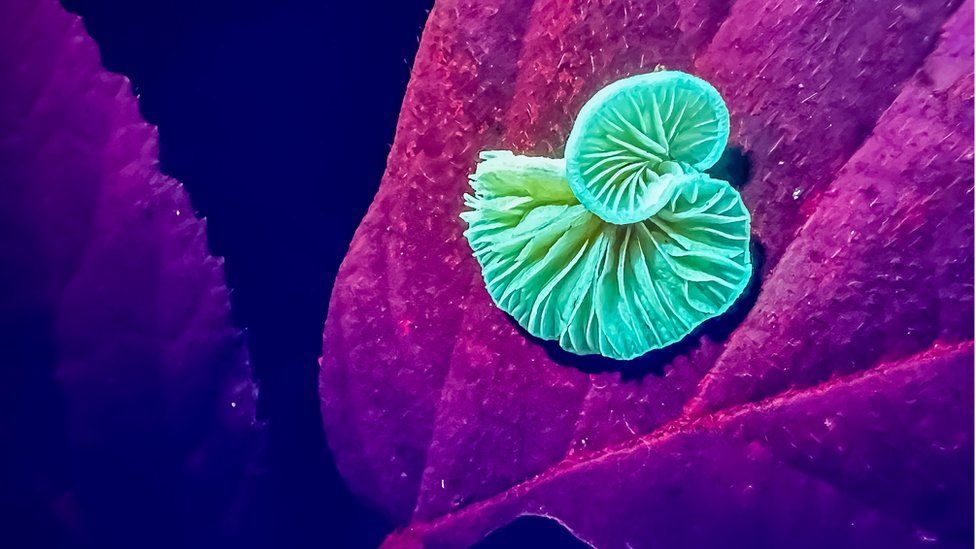-

-
-
Loading

Loading

During Wales' annual dark skies week, an eerie glow has been observed in the country's forests and rockpools. David Atthowe, a nature guide from Norwich, was invited to explore the best nature spots in Pembrokeshire and Monmouthshire using ultraviolet (UV) torches. Through his photographs, Atthowe revealed shapes, structures, and colors that rival those found in a coral reef. He believes that this "magic world" of biofluorescence, where plants and animals glow to communicate, is hidden from human senses and waiting to be discovered. Atthowe considers Wales lucky to have such beautiful sites for biofluorescence, such as rockpools and temperate rainforests. During Wales Dark Skies Week, Atthowe visited woodlands in Wye Valley and Pembrokeshire Coast National Park, offering tours to showcase the UV light magic. The ancient woodlands, with their vibrant mosses and lichen, fascinated him. He also emphasized the abundance of interesting creatures, such as wood lice and centipedes, in these environments. One woodland in particular, Ty Canol Wood in Pembrokeshire, stood out as one of the most magical and special woodlands in the UK, with over 400 known species of lichen. Atthowe's day begins at night due to humans' inability to see UV. He describes the dark as the most colorful and vibrant habitat, with mosses exhibiting various colors depending on their location, and lichens and algae displaying different hues. These natural wonders rival the vibrancy of a coral reef. Ruth Waycott from the Wye Valley National Landscape, who helped organize a biofluorescence walk in Whitestone forest, expressed fascination with the phenomenon. She explained that biofluorescence is a form of communication invisible to humans, but becomes visible when a UV light is shone. It allows plants to signal their toxicity, warning potential predators. Waycott emphasized the importance of exploring biofluorescence during dark skies week, as there is still much to learn about the effects of UV on animals. David Atthowe hopes to increase awareness and understanding of this magical UV world. He believes that humans are missing out on incredible experiences by not being able to see in the UV spectrum. Atthowe's favorite example of biofluorescence is the leopard slug, which releases a bright yellow defensive mucus that quickly changes to bright blue. He shares his advice for people interested in exploring the UV world themselves: obtain a UV torch and start observing the wonders that can be found in gardens, such as glowing flowers and caterpillars. In summary, the annual dark skies week in Wales has revealed a hidden world of biofluorescence in the country's forests and rockpools. David Atthowe, a nature guide, has captured captivating images using UV torches that showcase the vibrant colors and structures of this magical UV world. He hopes to inspire others to explore this phenomenon and increase our understanding of the natural world around us.